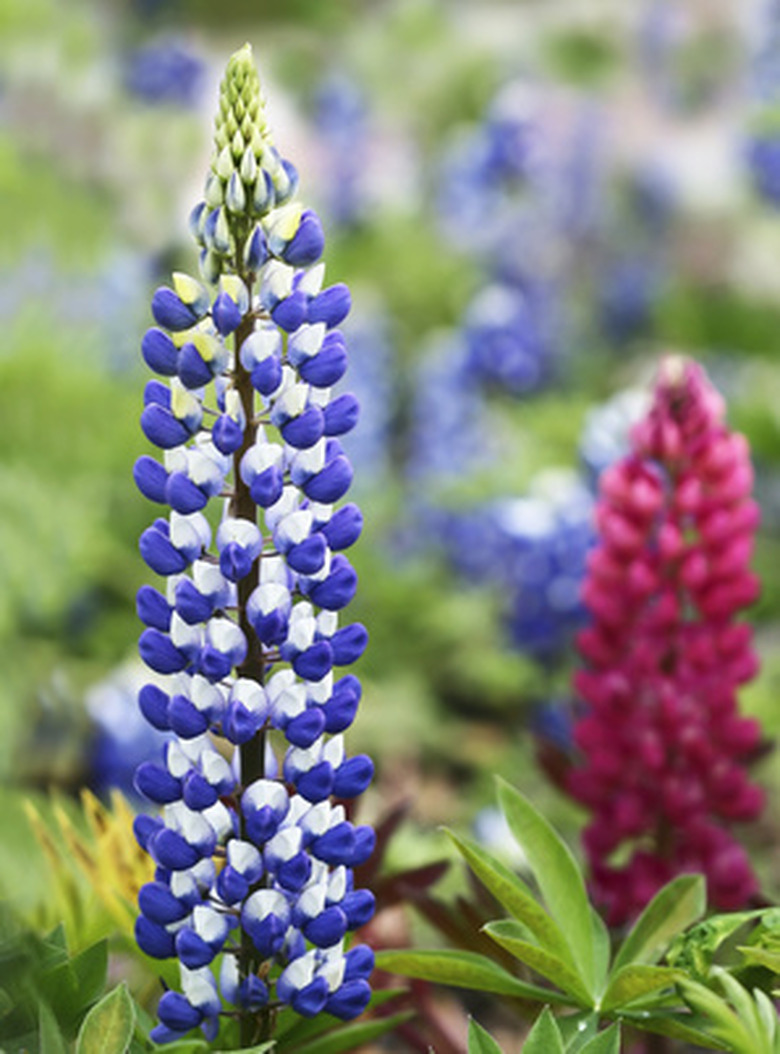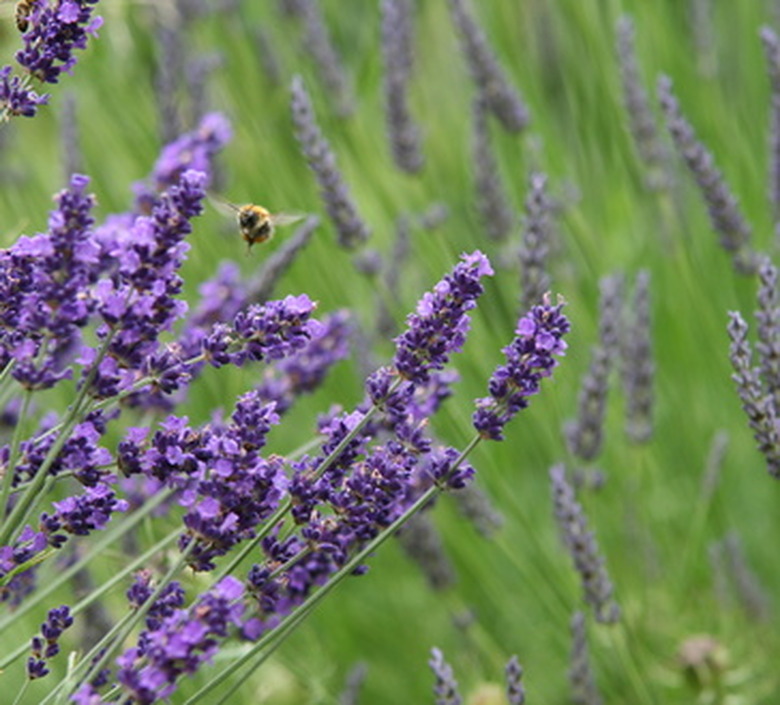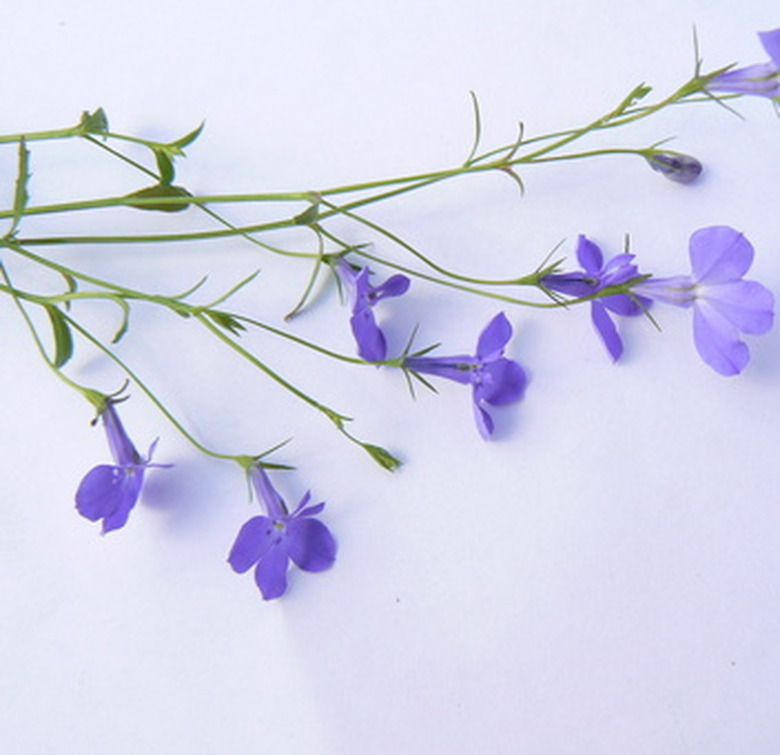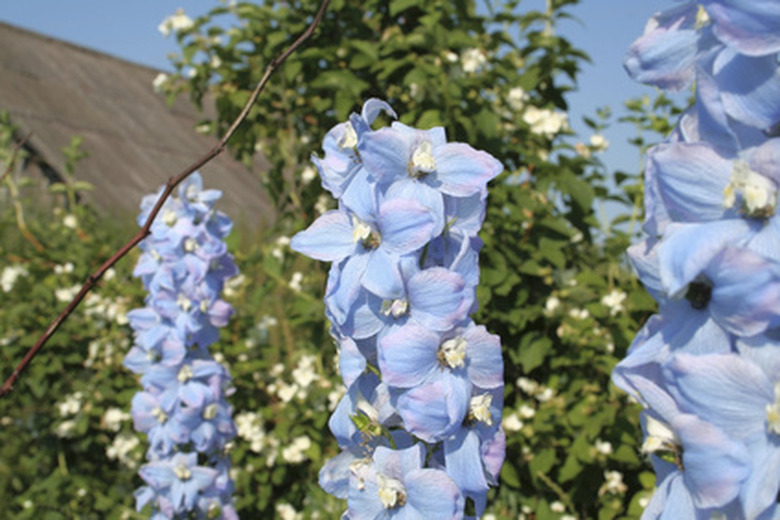Flowering Plants Beginning With The Letter L
The names of many flowering plants begin with the letter "L." When growing an alphabet garden, lupines, lavender, liatris, lobelia or larkspur are good choices to represent "L." They are easy to grow in most areas of the U.S. Include both perennials and annuals in your garden for a wide variety of plant types and flower colors.
Lupines
Lupines are tall perennial plants that have sturdy spikes of flowers. The individual flowers resemble sweet peas, and they are clustered at the top of stalks that are 2 to 4 feet tall. Lupines bloom in blue, purple, yellow, red or pink. They create a very showy tall backdrop in the flower garden. Lupines are easily grown from seed. Lupines have very long taproots, and the seeds should be planted outdoors where they are to grow. They prefer sun or partial sun, and they will tolerate dry soil. Till the planting area deeply and add deep humus. Lupines are not suited for clay soil.
- The names of many flowering plants begin with the letter "L." When growing an alphabet garden, lupines, lavender, liatris, lobelia or larkspur are good choices to represent "L." They are easy to grow in most areas of the U.S.
- Include both perennials and annuals in your garden for a wide variety of plant types and flower colors.
- Lupines have very long taproots, and the seeds should be planted outdoors where they are to grow.
Lavender
Lavender is at home in any sunny, well-drained garden spot. Start lavender from seeds indoors, or plant the seeds in a prepared garden spot when the weather has settled in the spring. Grow lavender near a window or walkway so you can enjoy its lovely fragrance. Lavender is most fragrant just before the flower buds open. Lavender is also a good candidate for container growing.
Liatris
Liatris is a native North American prairie wildflower. Other common names for liatris are gayfeathers and blazing star. They are easy to grow from seed, or look for liatris corms at garden centers. Liatris are drought tolerant. They thrive in sunny areas in relatively poor soil. The flower spikes are 3 to 5 feet tall, and they have the unusual characteristic of blooming from the top of the cluster down. Most spike flowers bloom from the bottom to the tip. Liatris flowers are purple or white.
- Lavender is at home in any sunny, well-drained garden spot.
- They are easy to grow from seed, or look for liatris corms at garden centers.
Lobelia
Different lobelia varieties may be either annual or perennial. Annuals are about 6 inches in height. They form massed clumps in beds and borders with white, blue or purple flowers covering the plants. Perennial lobelias have blue or yellow flower spikes about 30 to 36 inches tall. Plant lobelias in sun or partial shade. They prefer soil with a neutral or slightly acid pH of 6 to 7.5.
Larkspur
Larkspurs are annual flowering plants that resemble perennial delphiniums. The individual flowers have defined petals, and they are borne on stalks that reach 4 feet or more in height. Larkspur flowers are blue, purple, pink or white, with many shades of each color possible. Plant larkspurs along a fence or in a border, and use them as long-lasting cut flowers. Larkspurs are difficult to transplant, so plant seeds directly in the garden.
- Different lobelia varieties may be either annual or perennial.
- The individual flowers have defined petals, and they are borne on stalks that reach 4 feet or more in height.



